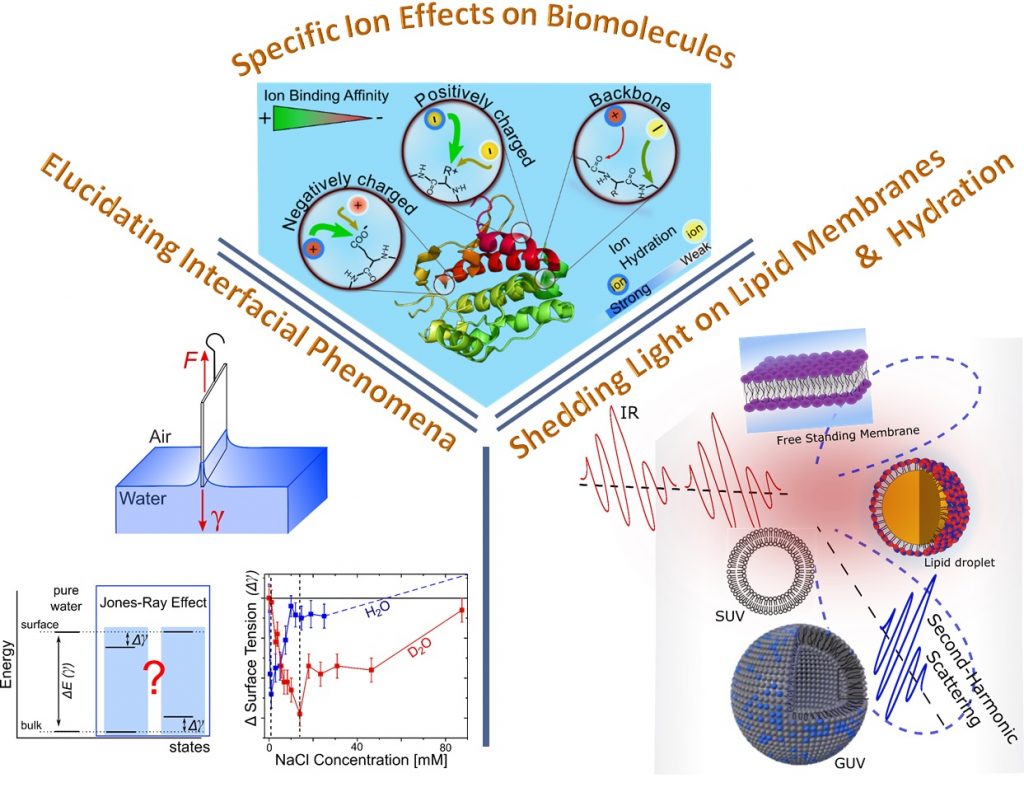
Research overview


In this highly collaborative study, the ultrasensitive detection of protein binding to liposomes is shown via second harmonic scattering technique. The binding of Perfringolysin O (PFO), a pore-forming toxin, having a high membrane composition selectivity for its membrane is utilized, and a dissociation constant of 10^-12 M is determined for its binding to cholesterol-rich membranes.
Dilsad will work on elucidating the interaction mechanisms of ATP with macromolecules.
In a collaborative research article, we clearly demonstrated the macromolecular size strongly influences the specific ion effects in aqueous solutions. (read more…)
A collaborative, multi-perspective investigation gives rise to the molecular level detailed picture of ions’ influence on the vibrational stark effect of various molecular probes. Salts containing well-hydrated cations like Mg2+ or Li+ led to the most notable Stark shift for the carbonyl group, while poorly hydrated cations (Cs+) had the greatest impact on the nitrile groups.
In this work, we explored the extended hydration shell structure of hyaluronan in aqueous solutions . Hyaluronan is a highly hydrated biopolymer found in the extracelular environment, such as synovial fluid between joints. Angle-resolved fs-ESHS measurements and nonlinear optical modeling show that hyaluronan behaves like a flexible chain surrounded by extended shells of orientationally correlated water. The spatial extent of the hydration shell is determined via temperature-dependent measurements and can reach up to 475 nm. (read more…)